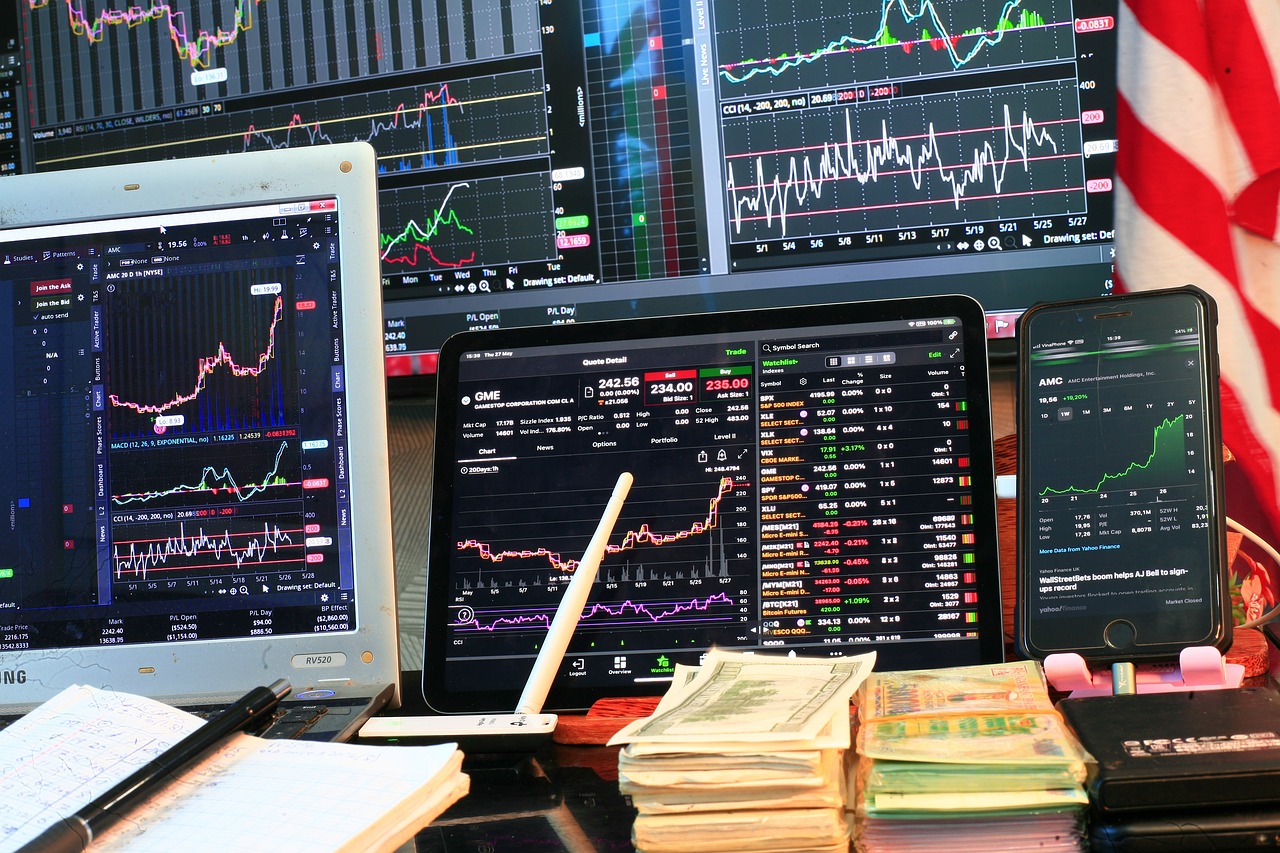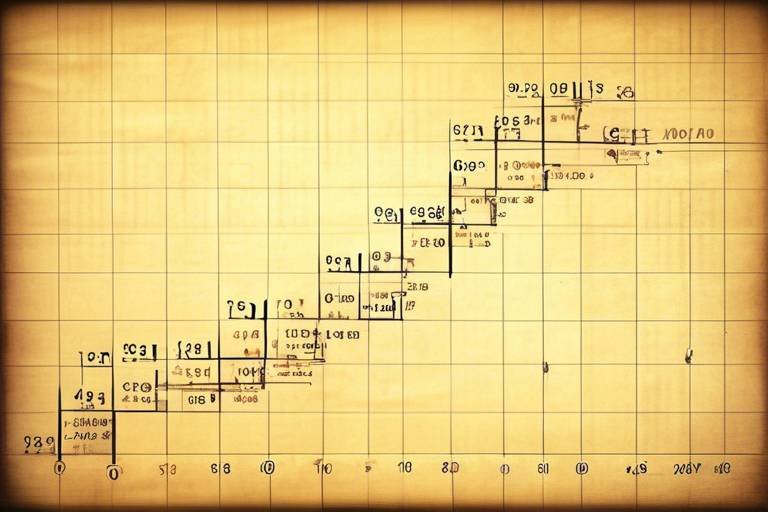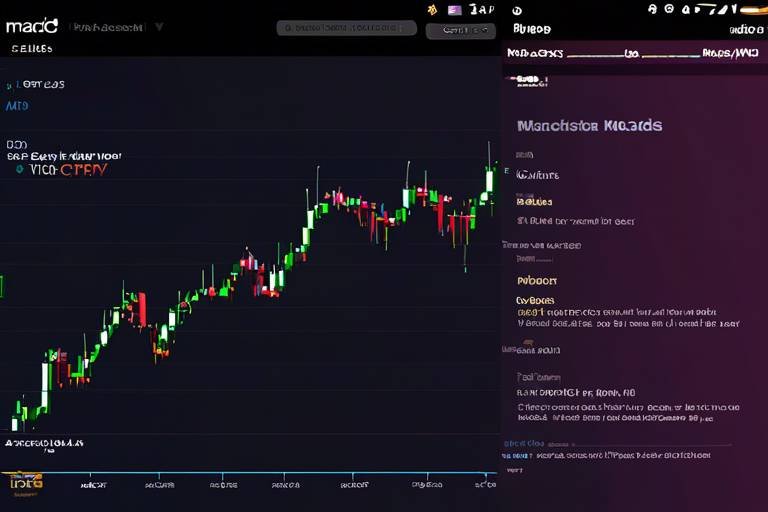Understanding the Importance of Fibonacci Levels in Trading
In the world of trading, where every tick of the price can mean a gain or a loss, having a solid strategy is paramount. One of the most fascinating tools traders use is the Fibonacci levels. But what exactly are these mystical numbers, and why do they hold such significant sway over market behavior? Let’s dive into the depths of Fibonacci levels, exploring their essence, their calculation, and their psychological impact on traders.
Fibonacci levels are derived from the Fibonacci sequence, a series of numbers where each number is the sum of the two preceding ones. This sequence appears in various aspects of nature, art, and even financial markets. Traders utilize specific ratios from this sequence—namely 23.6%, 38.2%, 50%, 61.8%, and 100%—to identify potential support and resistance levels. These levels act like invisible barriers where price movements may stall or reverse, akin to a river hitting a dam. Understanding and applying these levels can significantly enhance trading strategies and improve decision-making.
But why do Fibonacci levels work? The answer lies in the collective psychology of market participants. Many traders recognize these levels, leading to a phenomenon known as a self-fulfilling prophecy. When a significant number of traders place buy or sell orders around these Fibonacci levels, it creates a ripple effect, influencing price movements. Imagine a crowded street where everyone suddenly stops to look at something; the sheer number of people can create a bottleneck, causing a shift in the flow of traffic. This is precisely what happens in the financial markets when traders react to Fibonacci levels.
Incorporating Fibonacci levels into your trading strategy can be like adding a compass to your navigation toolkit. It helps you identify potential turning points in the market, guiding your decisions on when to enter or exit trades. Moreover, when combined with other technical indicators, Fibonacci levels can provide a stronger signal, enhancing your chances of making profitable trades. Think of it as a chef combining spices to create a dish that tantalizes the taste buds; the right mix can elevate your trading game to new heights.
As we explore further, we’ll break down how to calculate Fibonacci retracement levels, identify swing highs and lows, and understand the psychological aspects that make these levels so compelling. So, buckle up as we embark on this enlightening journey through the world of Fibonacci trading!
Fibonacci levels are key price points derived from the Fibonacci sequence, used by traders to identify potential support and resistance areas in financial markets. These levels are based on the mathematical relationships found in the Fibonacci sequence, which has captivated mathematicians and artists alike for centuries. In trading, these ratios can help traders forecast price movements and make informed decisions.
Calculating Fibonacci retracement levels involves identifying a significant price movement and applying the Fibonacci ratios to determine potential reversal points. This process can be broken down into several steps:
To calculate retracement levels accurately, traders must first identify the swing highs and lows of the price movement they are analyzing. Swing highs are the peaks, while swing lows are the troughs in the price chart. These points serve as the starting and ending points for the Fibonacci retracement calculation.
Various charting tools can assist traders in pinpointing swing highs and lows, making it easier to apply Fibonacci levels effectively. Many trading platforms offer built-in Fibonacci tools that automatically calculate and display these levels on the chart, saving time and enhancing accuracy.
Traders can choose between manually calculating Fibonacci levels or utilizing automated tools that simplify the process and enhance precision. While manual calculations can deepen your understanding of the market, automated tools can provide quick insights, especially in fast-moving markets.
Fibonacci extensions help traders identify potential price targets beyond the standard retracement levels, providing insights into future price movements. These extensions are particularly useful for setting profit targets and can be calculated using similar ratios.
Fibonacci levels often influence trader behavior, creating self-fulfilling prophecies as many market participants react to these key price points. Understanding market sentiment in relation to Fibonacci levels can provide traders with a deeper insight into potential price movements and reversals.
Market sentiment plays a crucial role in how Fibonacci levels are perceived and acted upon. By gauging the overall mood of the market, traders can better anticipate how others might react when prices approach these significant levels. This understanding can be likened to reading the room before making a big speech; knowing how your audience feels can shape your approach.
Integrating Fibonacci levels with other technical indicators can enhance trading strategies, providing stronger signals for entry and exit points. For instance, combining Fibonacci levels with moving averages or RSI (Relative Strength Index) can create a more robust trading strategy, akin to having a well-rounded toolkit for tackling various challenges.
- What are Fibonacci levels? Fibonacci levels are key price points derived from the Fibonacci sequence used to identify potential support and resistance areas in trading.
- How do you calculate Fibonacci retracement levels? To calculate Fibonacci retracement levels, identify the swing highs and lows of a price movement and apply the Fibonacci ratios to find potential reversal points.
- Why do Fibonacci levels work? They work because many traders recognize and react to these levels, creating a self-fulfilling prophecy that influences market behavior.
- Can Fibonacci levels be used with other indicators? Yes, combining Fibonacci levels with other technical indicators can enhance trading strategies and provide stronger signals for trades.

What are Fibonacci Levels?
Fibonacci levels are a set of horizontal lines that indicate potential support and resistance areas in the financial markets. These levels are derived from the Fibonacci sequence, a mathematical sequence where each number is the sum of the two preceding ones, typically starting with 0 and 1. The most common ratios used in trading are 23.6%, 38.2%, 50%, 61.8%, and 100%. Traders utilize these ratios to predict where prices may reverse or stall, allowing them to make more informed trading decisions.
The significance of Fibonacci levels lies in their ability to reflect the psychological behavior of market participants. When traders recognize these levels, they often react similarly, creating a self-fulfilling prophecy. For instance, if many traders believe that the price will bounce off the 61.8% retracement level, they might place buy orders around that level, which can indeed lead to a price increase. This collective behavior reinforces the importance of Fibonacci levels in trading strategies.
To illustrate how Fibonacci levels work, let's consider a hypothetical price movement of a stock that rises from $100 to $150. The Fibonacci retracement levels can be calculated as follows:
| Fibonacci Level | Price Level |
|---|---|
| 0% | $100 |
| 23.6% | $138.40 |
| 38.2% | $130.90 |
| 50% | $125.00 |
| 61.8% | $121.50 |
| 100% | $150.00 |
In this example, the Fibonacci levels indicate potential reversal points where traders might consider entering or exiting positions. Recognizing these levels can give traders an edge, as they can anticipate where buying or selling pressure may emerge. However, it’s essential to remember that Fibonacci levels are not foolproof; they should be used in conjunction with other technical analysis tools and market indicators for better accuracy.
In conclusion, Fibonacci levels serve as a vital component of many traders' toolkits, offering insights into potential market movements. By understanding these levels, traders can enhance their strategies and improve their chances of success in the ever-evolving landscape of financial markets.

How to Calculate Fibonacci Retracement Levels
Calculating Fibonacci retracement levels is a fundamental skill every trader should master to enhance their trading strategies. These levels are not just random numbers; they are derived from the Fibonacci sequence, a series of numbers where each number is the sum of the two preceding ones. This sequence reveals key ratios that traders use to identify potential reversal points in the market. So, how do you go about calculating these levels? It's simpler than you might think!
The first step in calculating Fibonacci retracement levels is to identify a significant price movement on your chart. This could be a strong upward or downward trend. Once you've pinpointed this movement, the next step is to identify the swing high and swing low of that trend. The swing high is the peak price reached before a decline, while the swing low is the lowest price before a rise. By determining these points, you can establish the range for your Fibonacci levels.
To accurately calculate the Fibonacci retracement levels, you need to be precise in identifying the swing highs and lows. This is where your analytical skills come into play. For example, if you're analyzing a bullish trend, look for the highest point the price reached before it started to pull back. Conversely, if you're looking at a bearish trend, identify the lowest point before the price began to rise. These points are critical as they serve as the foundation for your Fibonacci calculations.
Fortunately, there are various charting tools available that can assist you in pinpointing these swing highs and lows. Many trading platforms come equipped with built-in Fibonacci retracement tools that allow you to draw levels directly on your charts. This can save you time and enhance your accuracy. Simply select the tool, click on the swing low, and drag it to the swing high (or vice versa for bearish trends). The tool will automatically calculate and display the Fibonacci levels for you!
When it comes to calculating Fibonacci levels, traders have two main options: manual calculations or automated tools. Manual calculations involve using the following Fibonacci ratios:
- 23.6%
- 38.2%
- 50%
- 61.8%
- 100%
To manually calculate these levels, you would take the difference between the swing high and swing low, multiply that difference by the Fibonacci ratios, and then subtract or add this value to the swing high or low, respectively. This method requires a bit of math and can be time-consuming, but it gives you a deeper understanding of the mechanics behind Fibonacci levels.
On the other hand, automated tools can simplify this process significantly. Many trading platforms offer features that automatically plot Fibonacci retracement levels based on your selected price movement. This not only saves time but also enhances precision, allowing you to focus on analyzing the market rather than crunching numbers. Ultimately, the choice between manual and automated calculations depends on your personal preference and trading style.
In summary, calculating Fibonacci retracement levels involves identifying significant price movements, determining swing highs and lows, and either manually calculating the levels or using automated tools. Mastering this technique can provide you with valuable insights into potential support and resistance areas, enhancing your overall trading strategy.

Identifying Swing Highs and Lows
Identifying swing highs and lows is a fundamental skill for traders looking to effectively utilize Fibonacci levels in their analysis. Think of swing highs as the peaks of a mountain and swing lows as the valleys. These points mark significant changes in price direction and are crucial for calculating Fibonacci retracement levels accurately. But how do you spot these pivotal points?
First, it’s important to understand that swing highs occur when the price reaches a peak and then begins to decline, while swing lows are defined by the price hitting a low before starting to rise. To identify these points, traders often look for a series of price movements that display a clear upward or downward trend. A common method is to observe price charts over a specified time frame, such as daily or hourly charts, to pinpoint these swings.
Here are some practical steps to help you identify swing highs and lows:
- Use Candlestick Patterns: Candlestick patterns can provide visual cues for potential swing highs and lows. Look for formations like "pin bars" or "engulfing patterns" which often indicate reversals.
- Apply Trend Lines: Drawing trend lines can help clarify the price movements. A swing high will typically be at the end of an upward trend, while a swing low will cap a downward trend.
- Analyze Volume: Volume can be a significant indicator. A swing high accompanied by high volume may suggest strong resistance, while a swing low with high volume could indicate strong support.
Additionally, it’s beneficial to consider the context of the broader market conditions. For instance, if a swing high is reached during a bullish trend, it might be seen as a temporary peak before a pullback. Conversely, a swing low in a bearish market could signal a potential reversal or a continuation of the downtrend. Therefore, combining these observations with Fibonacci levels can provide a more comprehensive trading strategy.
In summary, identifying swing highs and lows is not just about recognizing price points but also about understanding the market's rhythm. By honing this skill, traders can effectively apply Fibonacci levels to enhance their trading strategies, making informed decisions that could lead to greater success in the markets.

Using Charting Tools
When it comes to trading, precision is key. Enter charting tools—your best friend in the world of technical analysis. These tools are not just fancy gadgets; they are essential for visually interpreting market data and making informed decisions. Imagine trying to navigate a maze without a map. Charting tools provide that map, helping you identify crucial price points, including Fibonacci levels, with ease.
There are various charting tools available, each offering unique features that can help you pinpoint swing highs and lows more effectively. For instance, platforms like TradingView and MetaTrader provide advanced charting capabilities, allowing you to overlay Fibonacci retracement levels directly onto your price charts. This feature can save you time and eliminate the guesswork involved in manual calculations. With just a few clicks, you can visualize where potential support and resistance levels lie, making your trading strategy more robust.
Moreover, many of these tools come equipped with customizable settings. You can adjust color schemes, line thickness, and even add annotations to your charts. This customization allows you to create a trading environment that feels comfortable and intuitive. Think of it as decorating your personal workspace; the more it resonates with you, the more productive you’ll be.
Another significant advantage of using charting tools is the ability to analyze historical data. By studying past price movements and how they reacted around Fibonacci levels, you can develop a deeper understanding of market behavior. This analysis can be invaluable, especially when trying to predict future price movements. You might find that certain levels have consistently acted as support or resistance in the past, giving you a psychological edge in your trading decisions.
However, it's essential to remember that no tool is foolproof. While charting tools can provide valuable insights, they should be used in conjunction with other analytical methods. Relying solely on Fibonacci levels without considering other indicators can lead to missed opportunities or, worse, losses. Therefore, integrating these tools into a broader trading strategy is the best approach.
In summary, charting tools are indispensable for any trader looking to leverage Fibonacci levels effectively. They enhance your ability to analyze market data, improve your trading strategy, and ultimately increase your chances of success. So, whether you are a seasoned trader or just starting, investing time in learning how to use these tools can pay off significantly in your trading journey.
- What are Fibonacci levels? Fibonacci levels are key price points derived from the Fibonacci sequence that traders use to identify potential support and resistance areas in financial markets.
- How do I calculate Fibonacci retracement levels? To calculate Fibonacci retracement levels, identify a significant price movement and apply Fibonacci ratios to determine potential reversal points.
- Are charting tools necessary for trading? While not strictly necessary, charting tools significantly enhance your ability to analyze market data and make informed trading decisions.
- Can I use Fibonacci levels alone for trading? Relying solely on Fibonacci levels is not advisable. It's best to combine them with other indicators for a more comprehensive trading strategy.

Manual vs. Automated Calculations
When it comes to calculating Fibonacci levels, traders often find themselves at a crossroads: should they go the manual route or embrace the wonders of automated calculations? Each method has its own set of advantages and challenges, and understanding these can significantly enhance your trading strategy.
Let's start with manual calculations. For many traders, this method offers a sense of control and a deeper understanding of the market dynamics at play. By manually identifying swing highs and lows, traders can develop a more intuitive grasp of price movements. This hands-on approach allows for greater flexibility and adaptability, as traders can adjust their calculations based on real-time market conditions. However, it can also be time-consuming and prone to human error, especially in fast-paced trading environments.
On the flip side, automated calculations provide a level of efficiency that is hard to beat. With various trading platforms offering built-in Fibonacci tools, traders can quickly generate retracement and extension levels without the need for manual input. This not only saves time but also minimizes the risk of calculation errors. For instance, a trader using an automated tool can focus on analyzing the market and making informed decisions rather than getting bogged down in the numbers. Yet, relying solely on automation can lead to a disconnect from the market's nuances, as traders might miss out on critical context that manual calculations can provide.
Many traders find a balance between the two methods. They might start with automated calculations to quickly identify potential levels and then refine those levels manually based on their analysis. This hybrid approach allows for the best of both worlds: the speed and accuracy of automation combined with the personal touch of manual oversight. Ultimately, the choice between manual and automated calculations depends on your trading style, experience level, and the specific market conditions you're dealing with.
In conclusion, whether you choose to go manual or automated, the key is to remain adaptable and open to different strategies. As you hone your skills in using Fibonacci levels, you’ll find that each approach can offer valuable insights into market behavior, helping you make more informed trading decisions.
- What are Fibonacci levels used for in trading?
Fibonacci levels are used to identify potential support and resistance areas, which can help traders determine entry and exit points. - Can Fibonacci levels be used in all markets?
Yes, Fibonacci levels can be applied across various financial markets, including stocks, forex, and commodities. - How do I know which Fibonacci levels to use?
Traders typically use the key Fibonacci ratios of 23.6%, 38.2%, 50%, 61.8%, and 100% to identify significant price levels. - Is manual calculation better than automated tools?
It depends on the trader's preference. Manual calculations offer more control, while automated tools provide speed and efficiency.

Understanding Fibonacci Extensions
Fibonacci extensions are a powerful tool in the arsenal of traders, allowing them to forecast potential price targets beyond the conventional retracement levels. While Fibonacci retracement levels help identify where a price might reverse after a pullback, extensions take it a step further by indicating where a price could go once it breaks through these retracement levels. Think of it like a runner who has crossed the finish line; the extensions are the markers that show how far they might run beyond that line.
To grasp the concept of Fibonacci extensions, it’s essential to understand the Fibonacci ratios involved. The most commonly used ratios for extensions are 161.8%, 261.8%, and 423.6%. These percentages are derived from the Fibonacci sequence, where each number is the sum of the two preceding ones. Traders use these ratios to project potential price targets, which can be particularly useful in volatile markets.
When analyzing a price movement, traders typically start by identifying a significant swing high and swing low. Once these points are established, they can apply the Fibonacci extension tool on their charting software. This tool automatically calculates the potential extension levels based on the selected swing points, allowing traders to visualize where the price might head next. For instance, if a stock rallies from $50 to $100 and then pulls back to $75, a trader can use Fibonacci extensions to determine potential targets for the next upward movement.
Here’s a quick breakdown of how Fibonacci extensions work:
| Fibonacci Level | Price Target Calculation |
|---|---|
| 161.8% | (High - Low) * 1.618 + Low |
| 261.8% | (High - Low) * 2.618 + Low |
| 423.6% | (High - Low) * 4.236 + Low |
By utilizing these extension levels, traders can set realistic profit targets and manage their risk more effectively. It’s not just about knowing where the price might go; it’s about being prepared for the journey. Think of Fibonacci extensions as road signs on the highway of trading—they guide you through the twists and turns of market movements.
However, it’s crucial to remember that Fibonacci extensions, like all trading tools, are not foolproof. They should be used in conjunction with other technical indicators and market analysis to confirm potential price movements. For instance, combining Fibonacci extensions with trend lines or moving averages can provide a more comprehensive view of the market, enhancing the reliability of the signals you receive.
In conclusion, understanding Fibonacci extensions can significantly enhance a trader's ability to forecast future price movements. By identifying potential targets beyond traditional retracement levels, traders can make more informed decisions, ultimately leading to better trading outcomes. So, the next time you’re analyzing a chart, consider applying Fibonacci extensions to gain deeper insights into where the market might be headed.

The Psychological Aspect of Fibonacci Levels
When it comes to trading, the psychological aspect cannot be overstated. Traders are not just reacting to numbers on a screen; they are influenced by emotions, beliefs, and perceptions. This is where Fibonacci levels come into play, acting not only as mathematical tools but also as psychological triggers. Imagine walking into a crowded room where everyone is whispering about a particular stock price; suddenly, that price becomes a focal point of attention. This is similar to how Fibonacci levels operate in the trading world.
Fibonacci levels, such as 23.6%, 38.2%, 50%, 61.8%, and 100%, often serve as self-fulfilling prophecies. When a significant number of traders place their orders around these levels, the market reacts accordingly. For instance, if many traders expect a bounce at the 61.8% retracement level, their buying activity can actually create a bounce, validating their expectations. This collective behavior can lead to substantial price movements, making Fibonacci levels not just statistical references but pivotal points of market psychology.
Moreover, the concept of support and resistance is deeply intertwined with Fibonacci levels. Traders often perceive these levels as barriers that the price may struggle to overcome. When a stock approaches a Fibonacci resistance level, traders might become overly cautious, fearing a reversal. Conversely, when prices dip to a Fibonacci support level, traders may feel a sense of security, leading to increased buying activity. This interplay of emotions can create a feedback loop that amplifies price movements, making understanding this psychological aspect crucial for effective trading.
To illustrate the impact of Fibonacci levels on trader psychology, consider the following table that summarizes how traders typically react at these levels:
| Fibonacci Level | Typical Trader Reaction |
|---|---|
| 23.6% | Initial caution; some buying may occur. |
| 38.2% | Increased buying interest; potential reversal. |
| 50% | High interest; often seen as a strong support/resistance. |
| 61.8% | Major psychological barrier; traders watch closely. |
| 100% | High volatility expected; possible breakout or breakdown. |
Understanding these psychological triggers can give traders a significant edge. By anticipating how other market participants are likely to react at these Fibonacci levels, a trader can position themselves more effectively. Are you the type who waits for confirmation before entering a trade? Or do you jump in as soon as you see the price hit a Fibonacci level? Knowing your own psychological tendencies can help you make better trading decisions.
In conclusion, the psychological aspect of Fibonacci levels is a fascinating blend of mathematics and human behavior. By recognizing the collective mindset of traders, you can harness the power of Fibonacci levels not just as tools for analysis, but as a means to navigate the emotional landscape of the market. So next time you’re trading, take a moment to consider not just the numbers, but the psychology behind them.
- What are Fibonacci levels?
Fibonacci levels are key price points derived from the Fibonacci sequence, used to identify potential support and resistance areas in financial markets.
- How do Fibonacci levels affect trading decisions?
Fibonacci levels can influence trader psychology, creating self-fulfilling prophecies as many market participants react to these key price points.
- Can Fibonacci levels be used with other indicators?
Yes, integrating Fibonacci levels with other technical indicators can enhance trading strategies, providing stronger signals for entry and exit points.

Market Sentiment and Fibonacci Levels
Understanding market sentiment is crucial for traders, especially when it comes to utilizing Fibonacci levels. Market sentiment refers to the overall attitude of investors toward a particular security or financial market. It can be influenced by various factors, including news events, economic indicators, and even social media trends. When traders recognize that many others are watching the same Fibonacci levels, they often react in a similar manner, leading to a phenomenon known as a self-fulfilling prophecy. For instance, if a significant number of traders identify a Fibonacci retracement level as a strong support point, they may place buy orders at that level, which can actually cause the price to bounce back, validating their initial analysis.
This collective behavior creates a feedback loop where the psychological impact of Fibonacci levels can amplify their significance. Traders often look at these levels not just as mathematical points, but as areas where the market is likely to react. This is why many traders will keep a close eye on Fibonacci levels during their analysis, as they know that others will be doing the same. In essence, Fibonacci levels serve as a psychological battleground where traders' expectations and actions converge, resulting in significant price movements.
Moreover, market sentiment can shift rapidly, influenced by sudden news events or shifts in economic data. This volatility can cause Fibonacci levels to act as dynamic support and resistance zones. For example, if a negative earnings report is released, traders may quickly abandon their long positions, leading to a break below a Fibonacci support level. Conversely, positive news can bolster confidence, leading to a rally that breaks through resistance levels. Thus, being in tune with market sentiment can provide traders with a competitive edge when using Fibonacci levels.
To illustrate the interplay between market sentiment and Fibonacci levels, consider the following table that outlines common market conditions and their potential impact on Fibonacci analysis:
| Market Condition | Impact on Fibonacci Levels |
|---|---|
| Strong Bull Market | Fibonacci retracement levels may act as temporary support before continuing upward. |
| Bear Market | Fibonacci retracement levels can become resistance, leading to price rejection. |
| High Volatility | Fibonacci levels may be breached frequently, requiring traders to adjust their strategies. |
| Low Volatility | Fibonacci levels may hold more significance, leading to clearer price actions. |
In conclusion, integrating an understanding of market sentiment with Fibonacci analysis can significantly enhance a trader's ability to predict price movements. By recognizing how collective trader behavior interacts with Fibonacci levels, you can not only anticipate potential reversals but also make more informed trading decisions. So, the next time you analyze a chart, remember that the numbers are not just mathematical figures; they represent the collective psychology of the market participants around you.

Combining Fibonacci with Other Indicators
When it comes to trading, the magic often lies in combining various tools and indicators to create a robust strategy. Fibonacci levels are no exception to this rule. By integrating Fibonacci with other technical indicators, traders can enhance their decision-making process and improve the accuracy of their trades. Think of it like adding spices to a dish; each ingredient has its own flavor, but together, they create a culinary masterpiece. So, how can you effectively combine Fibonacci levels with other indicators?
One powerful combination is using Fibonacci retracement levels alongside moving averages. Moving averages smooth out price action and help identify trends, while Fibonacci levels highlight potential reversal zones. For example, if a stock is trending upwards and approaches a 61.8% Fibonacci retracement level that coincides with a 50-day moving average, it could signal a strong support area. This dual confirmation can bolster a trader's confidence in entering a position.
Another useful pairing is Fibonacci levels with Relative Strength Index (RSI). The RSI measures the speed and change of price movements, indicating whether a market is overbought or oversold. If the RSI shows an overbought condition at a Fibonacci resistance level, it might be a strong signal to consider selling. Conversely, if the RSI indicates oversold conditions at a Fibonacci support level, it could be a prime opportunity to buy. This interplay between Fibonacci levels and RSI can help traders identify high-probability setups.
Additionally, traders often find value in combining Fibonacci levels with candlestick patterns. These patterns provide insights into market sentiment and potential reversals. For instance, if a trader observes a bullish engulfing pattern forming at a Fibonacci support level, it could indicate a strong buying opportunity. The combination of these two tools not only enhances the reliability of signals but also adds a layer of psychological insight into market behavior.
It's essential to remember that while combining indicators can provide more robust signals, it’s crucial to avoid overcomplicating your strategy. Too many indicators can lead to confusion and analysis paralysis. A good rule of thumb is to limit your toolkit to a few key indicators that complement each other well, allowing you to maintain clarity and focus. As you refine your approach, consider backtesting your strategies to see how effective these combinations have been in past market conditions.
In summary, combining Fibonacci levels with other indicators like moving averages, RSI, and candlestick patterns can significantly enhance your trading strategy. By leveraging the strengths of each tool, you can gain deeper insights into market dynamics and improve your chances of success. Remember, trading is as much an art as it is a science, and the right combinations can help you paint a clearer picture of potential market movements.
- What are Fibonacci levels?
Fibonacci levels are key price points derived from the Fibonacci sequence, used to identify potential support and resistance areas in financial markets. - How do I calculate Fibonacci retracement levels?
To calculate Fibonacci retracement levels, identify a significant price movement, then apply Fibonacci ratios to determine potential reversal points. - Can I use Fibonacci levels on any market?
Yes, Fibonacci levels can be applied to any financial market, including stocks, forex, and cryptocurrencies. - What are some common indicators to combine with Fibonacci?
Common indicators include moving averages, RSI, and candlestick patterns.
Frequently Asked Questions
- What are Fibonacci levels and why are they important in trading?
Fibonacci levels are critical price points derived from the Fibonacci sequence, which traders use to identify potential support and resistance areas in the market. They help traders make informed decisions by highlighting where price reversals might occur, making them essential for effective trading strategies.
- How do I calculate Fibonacci retracement levels?
To calculate Fibonacci retracement levels, you first need to identify a significant price movement, pinpointing the swing high and swing low. Then, apply the Fibonacci ratios (23.6%, 38.2%, 50%, 61.8%, and 100%) to determine potential reversal points. This can be done manually or by using charting tools that simplify the process.
- Can I use automated tools for Fibonacci calculations?
Absolutely! Many traders prefer using automated tools for Fibonacci calculations as they enhance precision and save time. These tools can quickly identify swing highs and lows, allowing you to focus on your trading strategy without getting bogged down in calculations.
- What are Fibonacci extensions and how do they work?
Fibonacci extensions are used to identify potential price targets beyond the standard retracement levels. By applying Fibonacci ratios to the price movement, traders can gain insights into where the price might head next, helping them set realistic profit targets.
- How do Fibonacci levels influence market psychology?
Fibonacci levels often create self-fulfilling prophecies in the market. Many traders react to these key price points, which can lead to increased buying or selling pressure at these levels. Understanding this psychological aspect can give you an edge in predicting market movements.
- How can I combine Fibonacci levels with other indicators?
Integrating Fibonacci levels with other technical indicators, like moving averages or RSI, can enhance your trading strategy. This combination provides stronger signals for entry and exit points, allowing for more informed trading decisions.



















